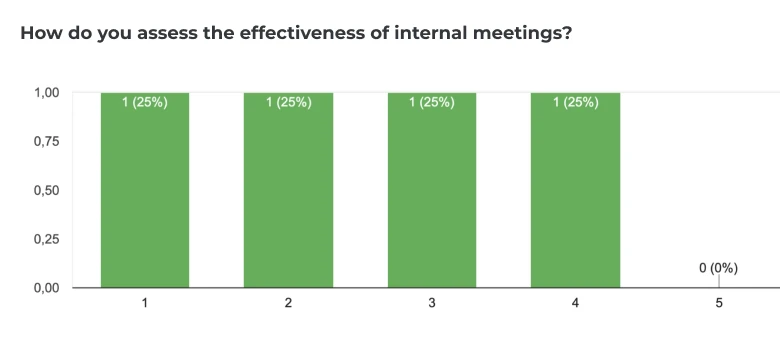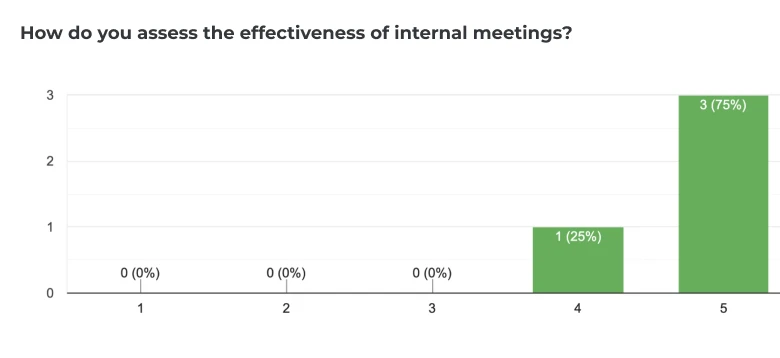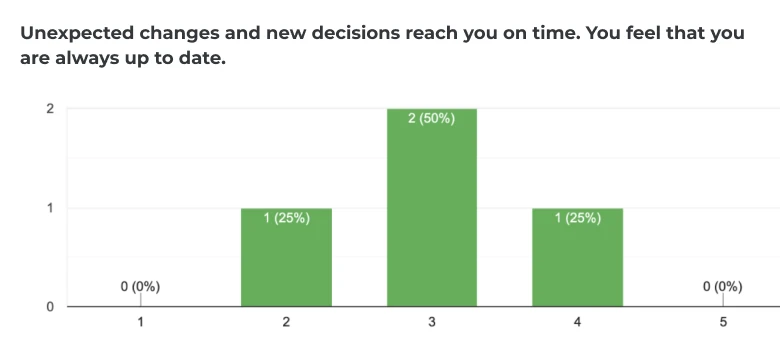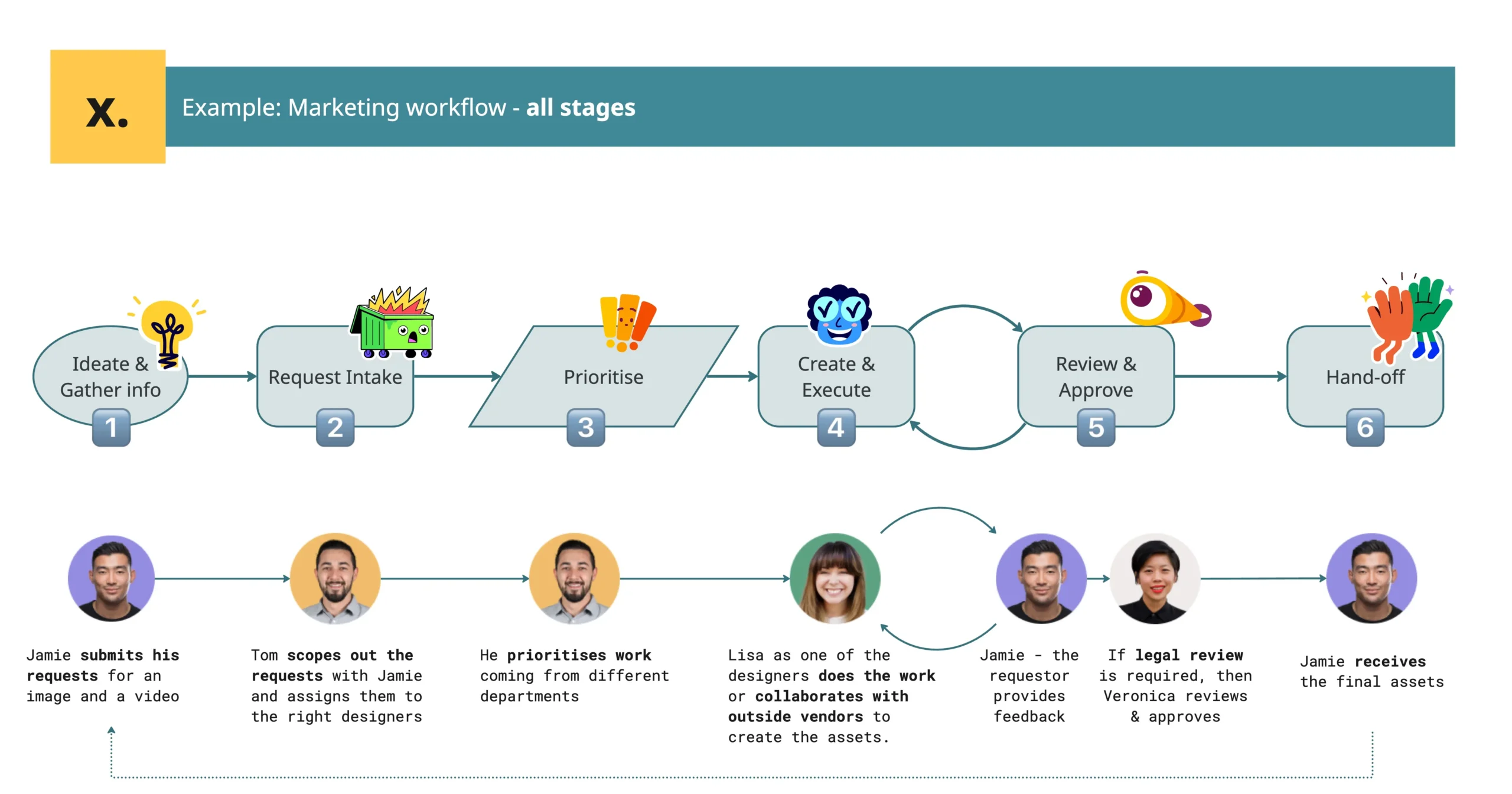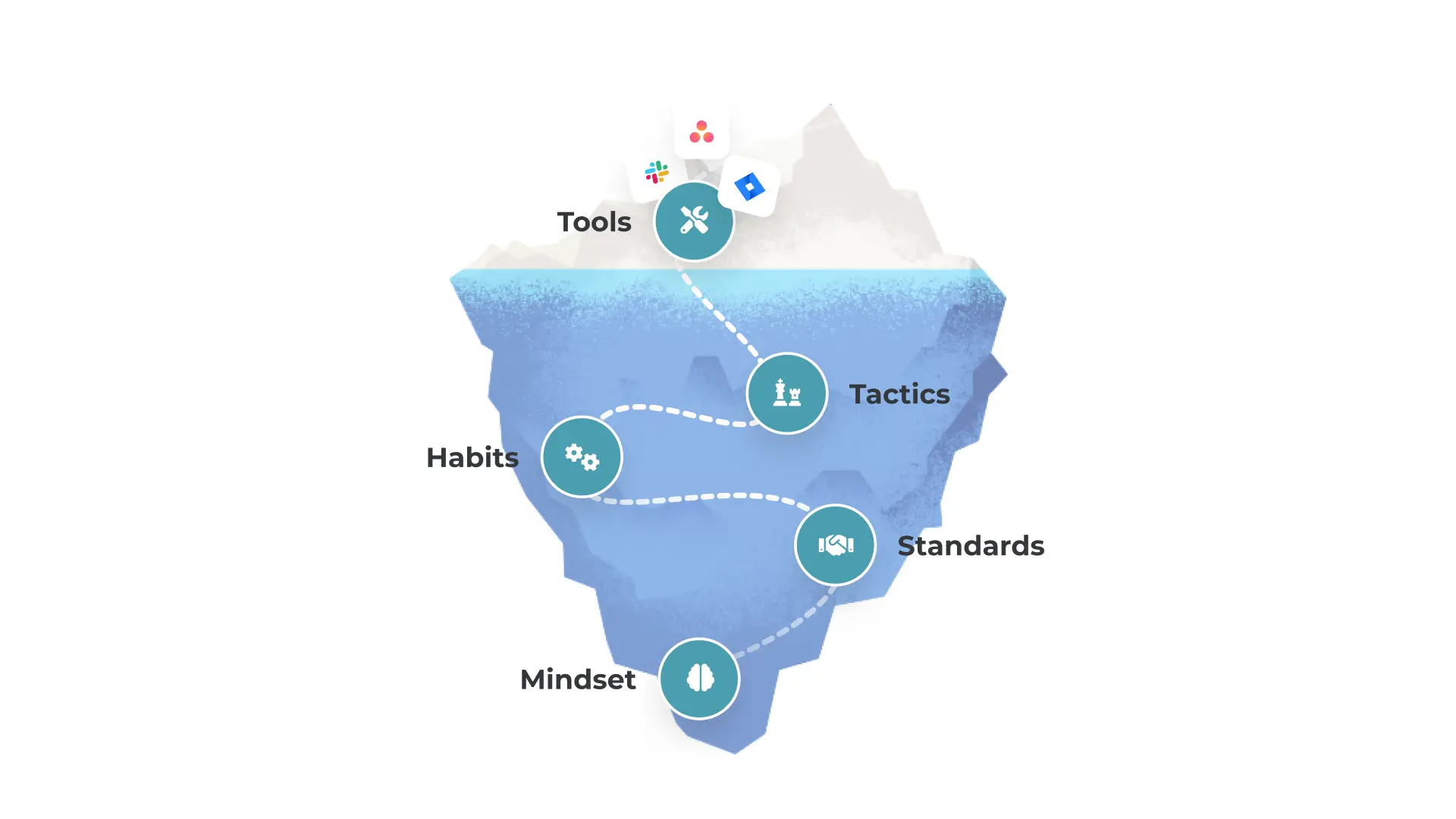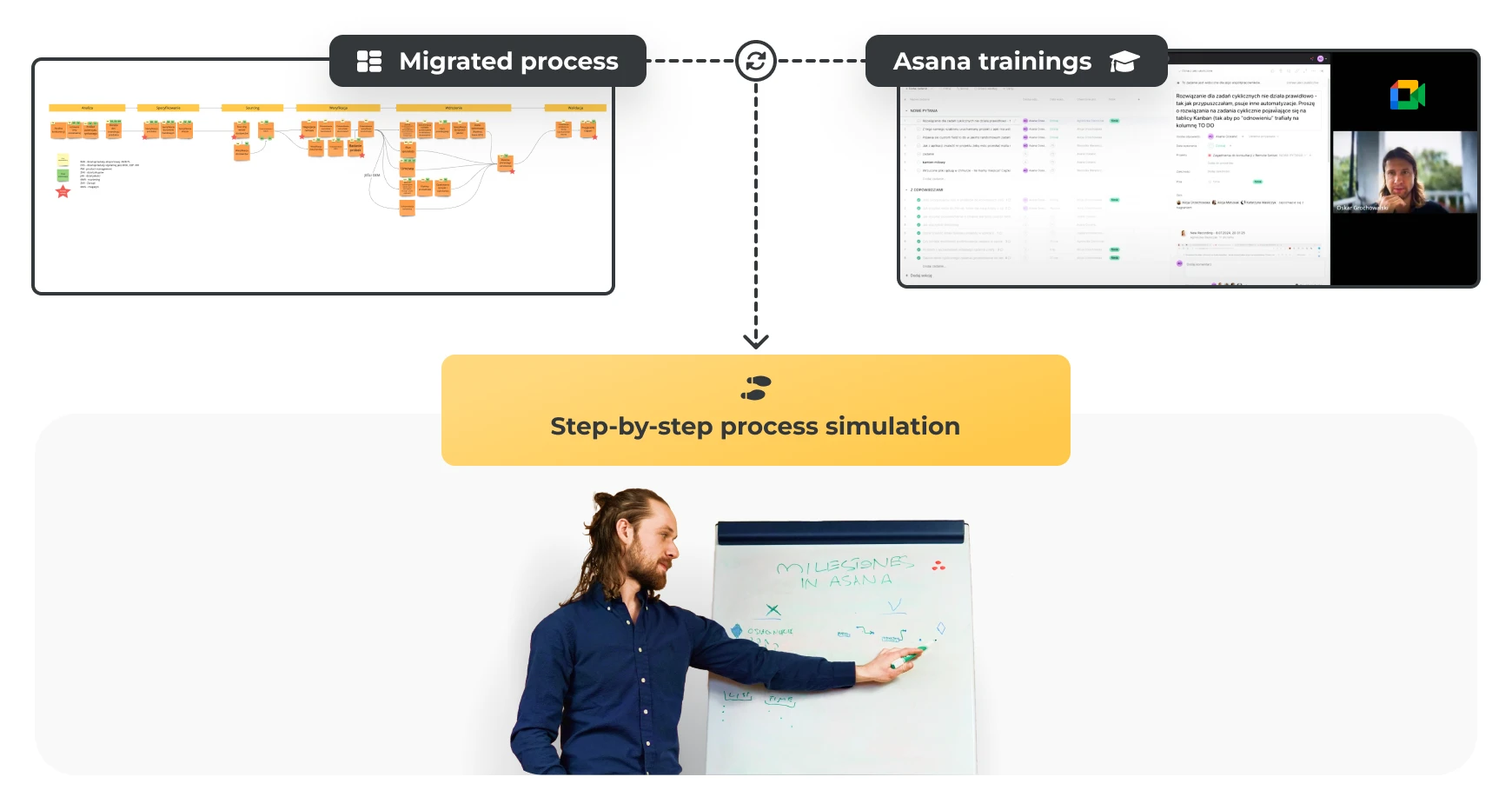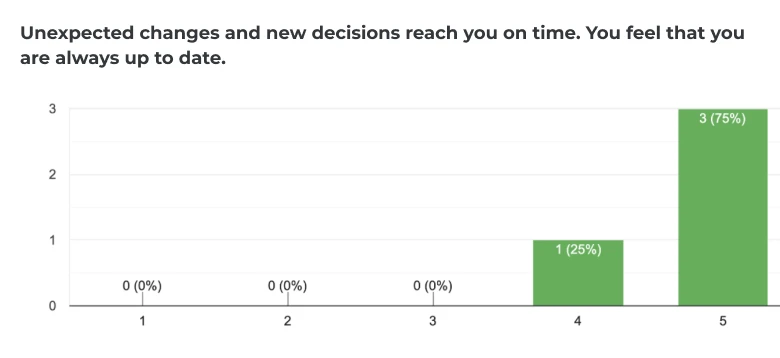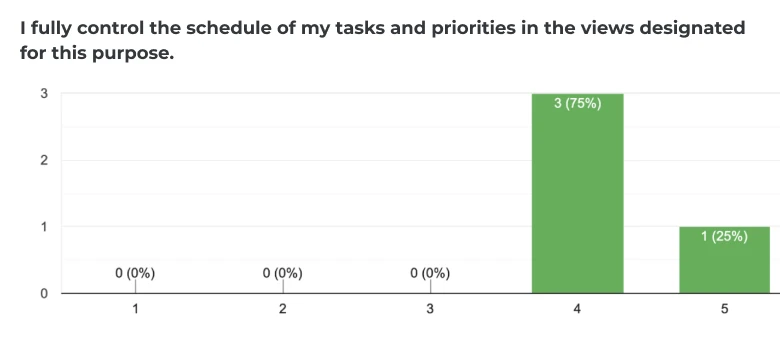Case study
How the Institute of Mother & Child has accelerated the product review process thanks to Asana and work mgmt upgrades

Institute of Mother & Child
| Industry | Health protection |
| Location: | Warsaw & remotely |
| Largest customers: | DADA, Dyson, Rodowita, Lovela, Fisher Price, Bella, Rücken |
| Team | 15 people |
Toolkit
Asana Advanced
work management application
Microsoft Sharepoint
file storage
Microsoft Teams
internal meetings
Before
- Too many workflows for a small team to coordinate without automation
- Frequent task delays and project timeline extensions
- Lack of shared work standards within the Asana environment
- Increased operational costs due to manual work and excessive meetings
After
- Automated processes and stable project delivery without increasing team size
- Shortened lead times for project milestones and improved planning accuracy
- Implementation of effective process and individual work management practices in Asana
- Fewer meetings thanks to a single source of truth with real-time status updates in Asana
Intro
Challenge
The Institute faced the challenge of optimising its product evaluation process for items intended for children and families.
This three-stage process involves working with companies of various sizes seeking to obtain a Positive Opinion from the Institute. When the number of clients was small, the team managed the workflow using a simple process document and could successfully handle several projects at once.
However, as the client base grew, so did the need for greater precision in planning and execution. The existing working environment made it difficult to keep up.
To stay on track, the opinion team shifted into a reactive “operational mode,” focusing heavily on day – to – day tasks and urgent matters. But this approach quickly became unsustainable.
Unfortunately, this was difficult in the current working environment.
In order to keep projects on schedule, the opinion team switched to an ‘operational mode’, during which they pursued current affairs and a very large number of tasks.
This could not last long…
With the decision of the opinion leader, we embarked on a project based on adapting the way we work and communicate to our ever-growing client base.
Solution
Implementation of change in 5 stages
Stage 1
Audit
As is often the case in this type of project, the audit proved to be a fundamental step….
The aim was to define solutions to deep-lying problems that were observed in the areas of communication and work management.
We wanted to answer the question:
What needs to change in order to serve the number of clients that is now overwhelming with the same number of people?
- 'drop-in' tasks destabilising the work of the team,
- lack of familiarity with Asana preventing full adaptation,
- lack of common working and communication standards in the process
Before we came to an answer, we deepened our understanding of the causes of the current situation.
01 Performance and time management problems
02 Communication and cooperation
The audit revealed inadequacies in internal communication. A lack of ongoing communication led to a loss of fluidity in project delivery. Team members were unsure how to communicate asynchronously and often did not have the information they needed to do their jobs – they relied on excessive ‘live’ communication and meetings as a result.
03 Operating costs and project management
Higher operating costs were the result of ‘work for work’ and the lack of use of repeatable management methods. Projects were managed manually, without clear templates or automation, leading to the consumption of more resources.
The conclusions of the audit laid a solid foundation for the next stages of the project.
Through a series of meetings, we identified deep-lying problems and the survey showed a quantifiable picture of the current situation in the team.
In other words – we knew what to work on
In other words - we knew what to work on
Results
- Obtain a shared vision for implementation and change within the team.
- Action plan for implementing the changes and achieving the selected metrics
Stage 2
Process mapping and migration
01 Mapping
This presentation of the process did not give a clear understanding of the sequential steps and tasks.
In addition, putting process descriptions in documents that were far from the context of the work – i.e. in the course of giving feedback on the product – are simply useless, because nobody looks at them.
- increase the clarity and transparency of the work,
- speed up the speed of interpretation,
- facilitate updates and optimisations,
- make understanding more consistent:
- responsibilities
- dependencies,
- successive milestones
In a dedicated workshop, we mapped out the subsequent elements of the process, using a proven proprietary framework.
- stages
- responsibilities
- milestones
- dependencies
- duration of tasks and steps
- points of automation
- workflows to be shortened
- the most common roadblocks
- integration of Asana with other tools
It is worth emphasising that at this stage we were still operating on a ‘process theoretical understanding’.
Only once we had a final version of the process in the flowchart could we move on to the migration and the eagerly awaited simulation.
02. Migration
Together, we proceeded to transfer further elements of the process to Asana.
As the team was already using Asana at this stage, we started this phase by reconfiguring the structures in Asana.
Crucial to the success of this phase was the uninterrupted day-to-day duties. We did not want the team to feel at any stage that the implementation was impeding the currently active processes. Therefore, we implemented the migration step by step, gradually adding other elements.
The main activities included:
- Reconfiguration of team structure and projects in Asana.
- Reconfiguration of process steps.
- Preparation of task templates.
- Setting of milestones and process times.
- Building automation.
We transformed theoretical process mapping into practical, automated actions.
What is important from the point of view of the process manager is that the quality assumptions of the process, previously described in a document that was rarely consulted, were now available at the time the process part was performed. This allowed the assumed quality of the process to be maintained much better.
The time has come for the team to manage the whole process and individual tasks in the best possible way.
Results
- Full understanding of the process by the participants.
- The optimised process reproduced in Asana, ready for use.
- The instructions maintaining the quality of the process were located as close to the work cotext as possible, i.e. at the time of the task in question
Stage 3
Practical use of Asana
Understanding how to use Asana in everyday work was not just about learning how to use the tool.
The tool in itself does not solve problems.
As always during the workshop, our focus was on imparting best practices that actually improve daily work.
We were keen to ensure that the participants in the process were able to achieve even more of their potential by testing and implementing new working habits.
- How to plan a week in Asana,
- how to work in deep concentration,
- how to use reports and automation effectively,
- how to effectively manage your inbox and notifications,
- how to use Asana during planning and meetings,
- how to build common working and communication conventions in Asana.
It was a significant shift in thinking - Asana was starting to become an integral part of the work, rather than just another app in the ecosystem of tools.
This approach ensures sustainable implementation of Asana and measurable results. The practical use of Asana, resulted in a significant increase in engagement and productivity.
The team, with a better understanding of the tool already at this stage, increased productivity and proceeded to further optimise the process.
Stage 4
Simulation and testing of workflows
Process migration + Asana training >>> Process simulation
After introducing the process into Asana and practically testing the working practices in the tool, we were able to start simulating and testing the process in practice.
The aim of this stage was to make sure that the mapped workflows work in practice as planned.
We started with a simulation workshop where we went through an example scenario of how to use the process from start to finish.
Each participant was able to experience how the tasks in the process are interdependent and what to pay attention to in the following weeks of process testing.
We focused on how the team coped with planning, coordinating activities, communicating and responding to unforeseen changes. Through testing, we identified in real time any inaccuracies that were affecting productivity.
Testing also included integrating Asana with other tools used by the team to ensure that all systems worked together seamlessly.
The final test result gave complete confidence that the workflows were not only theoretically, but also practically ready for implementation.
Results
- The team confirmed their willingness to work in an optimised process, taking into account new working habits and standards.
- Reduced process activation time (new customer service)
Stage 5
Establishing the direction of change
After successful simulation and testing, a key moment came – consolidating the direction of change.
This required consistent application of the methods developed and ensuring that every team member could use Asana effectively.
As part of this phase, we focused on monitoring how the team was getting used to the new tools and processes.
We regularly analysed the effectiveness of the implemented solutions and any difficulties that arose were immediately addressed.
We based the phase on systematic group and 1/1 meetings to discuss progress and possibly adjust the action strategy so that the whole team felt confident in the new working environment.
This approach has not only succeeded in consolidating the changes made at the level of:
- team management,
- process management
- individual work,
- teamwork.
The team not only learnt how to use Asana, but also gained an awareness of how this tool can be crucial in further evolving and improving internal processes.
The consolidation of the direction of change became the foundation for further efficiency gains and consistency in operations.
The final result was that participants confirmed the impact of the implementation on their daily work and felt increased control over their projects.
Final Results
The implementation has resulted in a system that has significantly increased the efficiency of the team. Thanks to the optimisation of the opinion process in Asana, the team can complete projects much faster.
Work in the process now flows at the established quality assumed by the initially multi-page document describing it.
We have reduced operational costs by eliminating redundant activities, and improved communication between team members has made collaboration more efficient.
The system has enabled the progress of the work to be tracked on an ongoing basis and ensured that all those involved have access to the necessary materials, regardless of their physical location.
As a result, the team has been able to take on more complex projects with the confidence that they can handle more.
Asana has been used by my team before, but it was only the implementation project with Remote Sensei that showed us the true potential of this tool.
By treating the subject very extensively and by also focusing on the individual needs of each person in the team, we achieved the desired result. Now we cannot imagine our daily activities without Asana.
To paraphrase the famous quote "If something is not in Asana it does not exist".

Aleksandra Świeboda
Head of Evaluation and Cooperation Development


